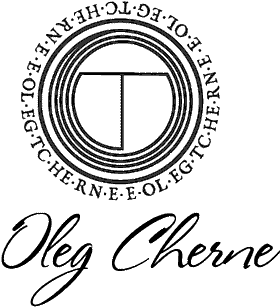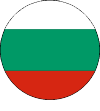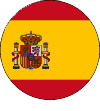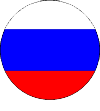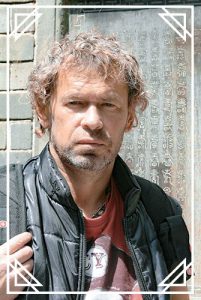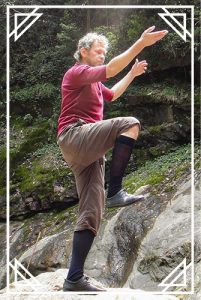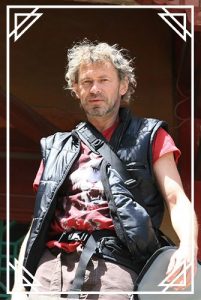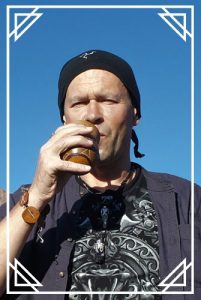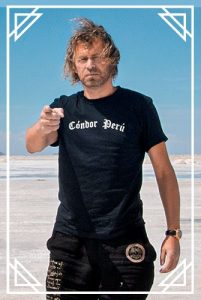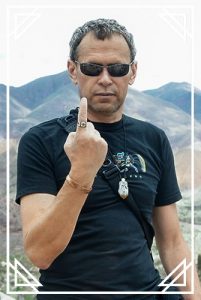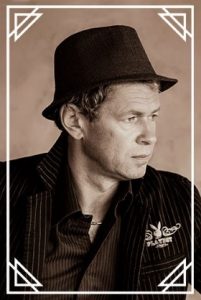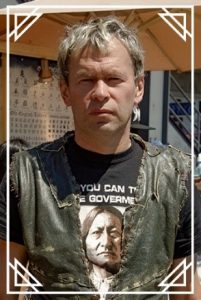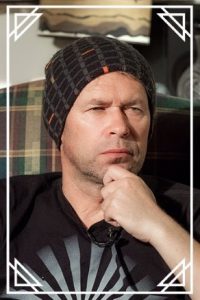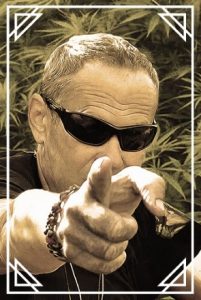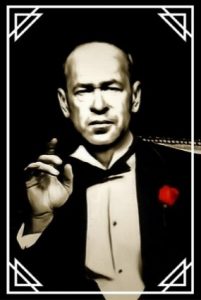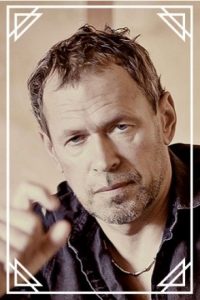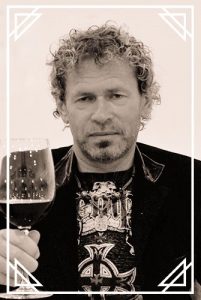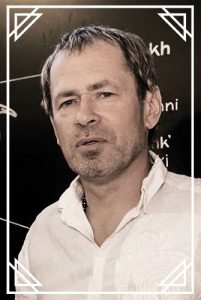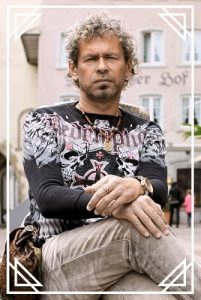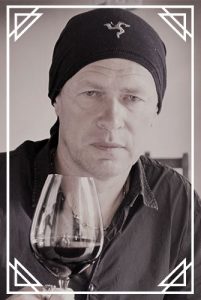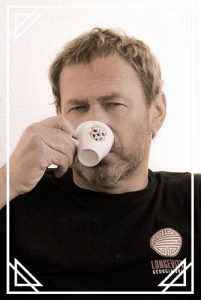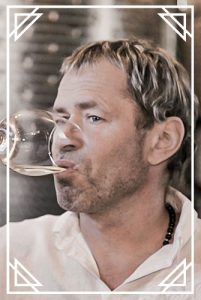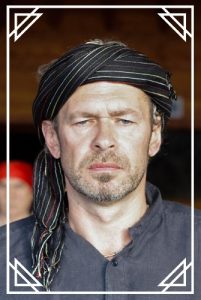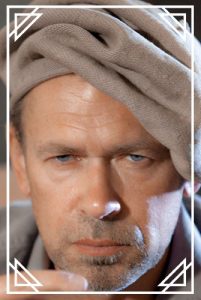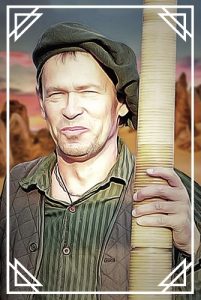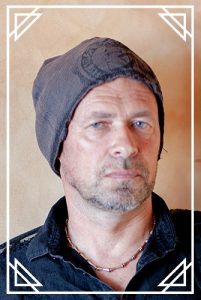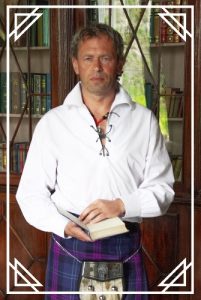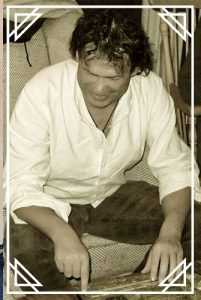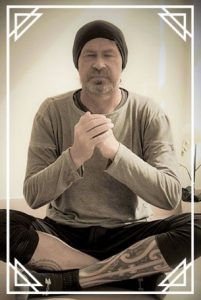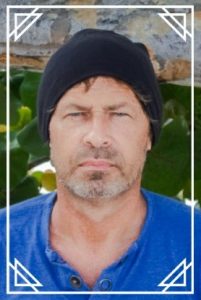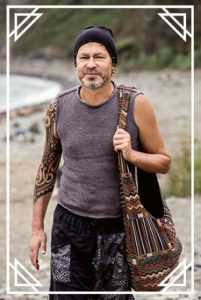Oleg Cherne
Biography
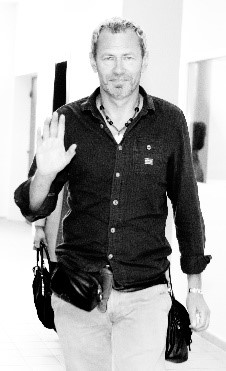 In their life, people can achieve energetic, physical, or intellectual development. Moreover, whether fortunately or not, they may realize this not at the beginning of their path, but after their fortieth year at best.
In their life, people can achieve energetic, physical, or intellectual development. Moreover, whether fortunately or not, they may realize this not at the beginning of their path, but after their fortieth year at best.
In fact, my reflections on the past no longer fit within the framework of the present, and much less the future. Today’s people have become accustomed to freebies, to mutated products, to sitting in front of the television, and in general to many things that deprive them of the most important thing – analysis. Even if people use that word, they’re not really ready for the realisation that lies behind it. And although the analysis develops over time, initially there’s a necessary protest directed at oneself: ‘I’m not capable’, ‘I can’t’, ‘I’m unfit’.
I, who was born during the time of Zen communism, could not take the refined life seriously. Buddha teaches – come out of illusions. But to understand them, you need to change your vanilla life. Today nothing prompts growth. Knowledge has eroded, concepts have disappeared, bodies have become refined. And here I am writing a biography about myself – essentially for myself, putting a bold end to my struggle with the self. And discovering a new struggle with modesty.
In fact, the time has come when I can say I have a biography myself. More accurately, I have several biographies. These are the biography of CHOM, the biography of Jie Kong, the biography of Ben Chelero, the biography of Shaaban, the biography of Gleb Cherny (Gleb Du), Patrono, Sri Chol, and a very short biography of Oleg Cherne.
As it happens, my life has been divided into three large parts and one small part. Searching, struggling with my importance and personal history, leaving society and living in it.
Each of these periods corresponded to a different name.
- CHOM (which actually means Cherne Oleg Mikhailovich) is the name I adopted during the KGB surveillance period.
- Jie Kong is my Taoist name and is associated with withdrawal from society.
- Ben Chelero is a challenge-name associated with the 13th Mayan Sun Seal and my birthday, a name of revolutionary beginnings and a constant struggle with oneself.
- Shaaban is my Sufi name
- Gleb Cherny (aka Gleb Du) is my social name
- Chola or Sri Chola is my irrational name
And so, in regard to the struggle against my own modesty, I have no choice but to declare that behind all these names, which have signed dozens of articles and books, there is one person – Oleg Cherne.
Behind each of them, however, there is a separate story. I must, therefore, start from the moment when I thought – do I have a story at all? The truth is that I thought about it after I started to define myself as a CHOM, and that happened after I fell off the roof.
But it was in CHOM that the main, mystical story of my existence lay, which changed my entire attitude toward life. And I would call this period what my book is called, “Immortality and Sexual Syndrome”.
Biography:
- Immortality and Sexual Syndrome
- Tao
- Who Are You, or the Jie Kong Period
- Across the Universe
- Hey, You!
- Erasing Personal History, Or The Story Of Ben Chelero
- Rhythm
- Patrono
- The Celtic Trace of Gleb Cherny (Gleb Du)
- Immortality and Water
- Shaaban
- A Little History of Oleg Cherne
- Chola
Immortality and Sexual Syndrome
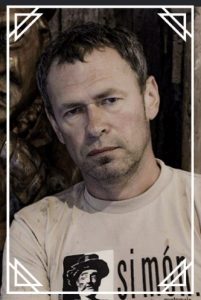 This is the time shaped under the name CHOM. This period turned out to be quite long. It started somewhere around my 16th year (when I started studying Soviet-style karate from a former sambo wrestler, and from that moment on it’s unclear whether I was either shaking hands, shaking something off, or pretending I was fighting something or someone) and ended about 16 years later.
This is the time shaped under the name CHOM. This period turned out to be quite long. It started somewhere around my 16th year (when I started studying Soviet-style karate from a former sambo wrestler, and from that moment on it’s unclear whether I was either shaking hands, shaking something off, or pretending I was fighting something or someone) and ended about 16 years later.
In fact, this period is in the base of three of my books: “Immortality and Sexual Syndrome”, “Hey You”, and “The Hermit”. Therefore, I don’t need to describe it in detail – I’ll just point out some facts.
The most important thing for me was to comprehend what or who I am. How can you achieve anything when you don’t have your own identity? And when there is no personal identification, what kind of biography would that be? Not only are you nothing, but you don’t know where to go and what you really need to achieve. And even all my father’s efforts were in vain, whether because of my inadequacy, my weakness, or simply due to my basic dissatisfaction, which flowed out of my tattered domestic structure. In general, the stupidity grown over the years, thanks to the street and school, drove me into a certain niche.
Of course, I could have added family here, but it did not have much influence on me due to the contradictions between my father and my mother. So perhaps the worst thing I avoided was the urge to follow in my father’s footsteps. That niche splintered up like an old board in the late 1970s when it is not clear from where and how guys in white clothes who could beat each other up beautifully appeared on the scene.
There had to be something that would really interest me. And since in our youth we can be interested in either something mysterious or something authoritative, it turned out to be some young men in white kimonos, who jumped, kicked, yelled, and punched each other for real. Whether it was karate or not it didn’t matter. It was real. It was later refined when karate became a sport.
In general, I was attracted by a certain mysterious beginning under the brand of karate, although it had no professional, methodological or philosophical background. But there was a spirit. There were people who were just punching each other in the face, breaking arms. The only thing that distinguished them from the street, even though they all represented the street, was that they fought “by the rules”.
And yet there was a philosophy in this: liberation from slavery. Perhaps that’s what attracted me. And after many years of studying karate, I realized that it wasn’t karate that I went to. I just saw that form of existence, that spirit, and concepts that I lacked – it was tough, painful, but honest. In general, I got a second father, the judge of my life – Viktor Vasilyevich Kuznetsov, whom I still consider my only teacher, although after more than 10 years of daily plowing and training I left in search of deeper foundations of existence.
It was with V.V. that the first conspiracies were later connected. He, as a famous specialist who had not accepted the laws of society, was subjected to total surveillance after Karate was shut down in 1982. I learned this the hard way, as my phone was tapped, and some people just told me about it.
When I was practicing in almost complete darkness, alone in the forest, and they came up to me and said that I should either stop practicing or end up in jail, all doubts disappeared altogether. Actually, this was the birth of my name CHOM, under which I was hiding from the KGB. At least, I thought I was hiding.
By this time, I was already an established student. The most important thing for me was the teaching as a rigorous and productive service. I had built up a rhythm, perseverance, and rigor: everything at such a high level that I didn’t have the strength for anything else. Six to eight hours of practice every day for many years predestined me to be a fighter for my inner freedom. And not only I did not care about the KBG but it also helped me in my quest later on.
It can’t be said that my life was a joy to me. Rather, it was a project to “transform” the torment into something else. Many hours of training took place twice a day, starting in the early morning. There was no question of technique, only survival.
In general, the stigma of being “Made in the USSR” crashed and burned along with my body and with the idea of being the first, the most important, the best. Of course, you don’t have to fall off a roof to understand the simple idea that before you can want something, you have to be someone. But how can you be someone if there is no open interest in learning when you are like a cesspool that must be emptied first? In fact, the fall has hit me well, I guess. I plunged from the world of “faster, higher, stronger” into the world of my room, fully covered in a plaster cast and immobilized. There was nothing left to do but to start exploring the world from the window of my room.
“Crime and Punishment” – the edification book. Marx’s “Capital”, Plato, Cicero, Augustine the Blessed, Benedict of Nuria, Aristotle became my teachers for the coming years. Of course, I did not abandon the idea of perfection that Vasilich instilled in me. But the maximum I could do was to twirl my left arm, which I did for two hours a day, establishing a rudimentary practice to deceive my body.
My intellectual pursuit made me even more depressed by the fact that there is so much magnificent and almost inaccessible knowledge in the world. I felt that not only was I a cripple, I was also an intellectual freak. Yet after a year and a half, I was back on my feet and, hiding my physical ailments, returned to the path of self-torture.
But now I was devoting enough time to the intellectual, and every day I realized that I wasn’t missing anything, I just wasn’t ready. Without concentration, the intellectual is a farce. And I managed to avoid it. School, fortunately, hadn’t destroyed me because I didn’t understand what I needed it for. And now I want to say: it is not needed at all. School is the enemy of the child. It’s where frustrated, unconcentrated, and dissatisfied teachers play with the bodies and minds of children. Indeed, there were people of spirit around me then. Not people of the information who are supposedly intellectual and smart but lack the spirit to develop and challenge themselves. Not only are they sick in the body, but they are also sick in the head. Why do they need all this information, which will never become knowledge? Knowledge without spirit and concentration is, excuse me, a cesspool.
And I made a decision, which became, perhaps, my salvation: “I no longer have friends – there are just those who study nearby”. Perhaps it was wrong, but I needed it. I felt like I was losing my life. I decided to sacrifice the most important thing: friends and family. A friend is someone who relaxes you and takes up your time. Someone who keeps you from leaning on yourself. That was the reality for me. I didn’t need anyone to feel sorry for me or to help me. If I’m not there yet, who are they helping? So they’re getting in the way! So that’s it! My energy was enough for only 5-7 conscious hours a day, the rest of the time was spent sleeping and waiting for the next 7 hours.
Tao
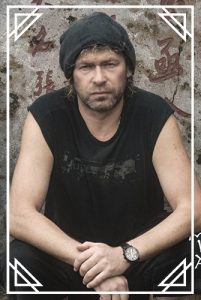 It so happened that Oleg Cherne’s fall from the roof coincided with the beginning of his study of Taoist practices. Taiji, achieving Zen, and Tao became his new venture. In fact, he needed all the ventures that would help him deal with his lack of independence and self-sufficiency. These were his new friends.
It so happened that Oleg Cherne’s fall from the roof coincided with the beginning of his study of Taoist practices. Taiji, achieving Zen, and Tao became his new venture. In fact, he needed all the ventures that would help him deal with his lack of independence and self-sufficiency. These were his new friends.
Despite the isolation of the country back then, there was an active import of essential and practical knowledge. Any Asian person familiar with tradition was of interest, and my Master always knew who, where, and why had shown up. In the spirit of the best traditions, guests were invited, entertained, wined and dined, and after only a quarter of an hour, it was clear what this Master represents and whether he was worth inviting again.
It turned out that obtaining the key to secret knowledge is not so difficult if one has experience, an attempt at analysis, and a constant desire to learn. Oleg Cherne had no choice but to observe, communicate, and absorb. In general, the idea of knowledge then occupied him probably more than knowledge itself – it had become a position of service. “I was a servant of the practice and the idea, with nothing left to do but to believe”, CHOM recalls.
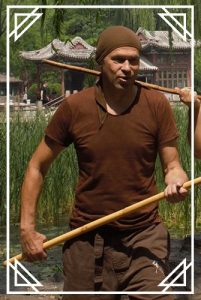 There wasn’t much choice, though. After the fall from the roof, it took almost ten years for his body to recover – from time to time his legs or arms “switched off” or there were other problems. It was a special period, his disability drove him to search for additional opportunities and development, which forced him to look for alternative paths to knowledge. This period also includes his meetings with people who studied the possibilities of gaining superpowers and immortality. For example, with one KGB general, or with a monk, who had shown up in his life in a mysterious way, as well as with various gurus, which turned out to be not so few at the time.
There wasn’t much choice, though. After the fall from the roof, it took almost ten years for his body to recover – from time to time his legs or arms “switched off” or there were other problems. It was a special period, his disability drove him to search for additional opportunities and development, which forced him to look for alternative paths to knowledge. This period also includes his meetings with people who studied the possibilities of gaining superpowers and immortality. For example, with one KGB general, or with a monk, who had shown up in his life in a mysterious way, as well as with various gurus, which turned out to be not so few at the time.
This period is described in his book “Immortality and Sexual Syndrome,” where are highlighted the most significant moments in the search for supersense. The name CHOM was already gaining special meaning and significance. He had already become a professional cryptographer. How else could it be, when he had to communicate simultaneously with security officers, mages, non-humans, and other subjects that he doesn’t even know what to call.
However, this gave him the opportunity to feel deeply and seriously the real and powerful impact of the unknown world on life, dependаnt not so much on human laws as on some kind of energy laws (this period is described in the book “Hey, You!”).
Who Are You, or the Jie Kong Period
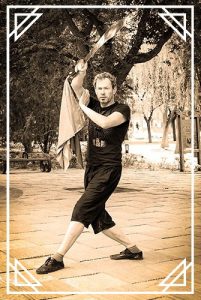 Actually, the period of CHOM is quite long, and although it has intertwined with the appearance of other names, its task was to leave and say goodbye to society. He didn’t need a biography, and was effectively destroying it along with his real name. It was as a CHOM that he went wandering around the world in search of knowledge, not wanting to have anything to do with society.
Actually, the period of CHOM is quite long, and although it has intertwined with the appearance of other names, its task was to leave and say goodbye to society. He didn’t need a biography, and was effectively destroying it along with his real name. It was as a CHOM that he went wandering around the world in search of knowledge, not wanting to have anything to do with society.
CHOM was the name under which he played another life. He finds it when he has already become Jie Kong. But that’s another story. And although he managed to write dozens of books under the name CHOM, in reality, they were not books, but lapses in space to show that his ideas are utopian. It was a reaction to space and his task was not to provide answers but to make people ask questions (recommend books to read are ‘Alchemy of Bagua’, ‘The Alchemy of Taiji (published in English), ‘Taoist Yoga for Women’, and ‘32 Rotations of the Crucible Furnace’).
The main merit of CHOM is that he has not only learned to ask himself questions, but he also found answers to many of them. And, most importantly, he learned how to learn. This is the one thing that not only allowed him to survive wandering around the world but also to find a continuation of his development.
So, with a set of knowledge, life began to make sense. This period is associated with a different name – Jie Kong. It’s not that the name CHOM has ceased to exist but it was time to act. And CHOM began to be reborn as Jie Kong, and sometimes it just existed in parallel, occupying the niche it had built for itself.
“When you are ready, you can start moving. I would call the Jie Kong period probably the happiest because during that period I was able to obtain knowledge, or rather got the opportunity to obtain it. We often confuse knowledge with information, which becomes knowledge only after painstaking work, and I had to work hard to make it a part of me.”
CHOM began to “transform” into Jie Kong, realizing that it’s one thing to talk about knowledge, another is to use it from the perspective of one’s experience. And the third thing is for that knowledge to actually create an experience that belongs to that knowledge and that gets a person moving.
This is how a long period of his life associated with travel and wandering began. Actually, this period hasn’t ended and continues to this day. However, from his insane existence, caused by the extreme state of constant studies and hermit life, he moved into a sane state. Besides CHOM has mingled with other names too. Although it all began somehow theatrically: “That’s it, I’m leaving, it’s as if I’m no more… I will not be back soon”.
No one believed him…
Across the Universe
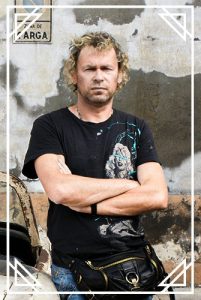 It was 1989, the beginning of the socio-political upheaval. CHOM collected two or three hundred dollars and got on a train… This is how his long-term trip around the world began, which continues to this day. The only things that have changed are the time, and the nature of his travels. Back then, getting out of the country was more complicated than traveling abroad without visas. What helped him was having two visas: one from China, still communist at the time, and the other from the USA, which he got surprisingly easy with an invitation from there.
It was 1989, the beginning of the socio-political upheaval. CHOM collected two or three hundred dollars and got on a train… This is how his long-term trip around the world began, which continues to this day. The only things that have changed are the time, and the nature of his travels. Back then, getting out of the country was more complicated than traveling abroad without visas. What helped him was having two visas: one from China, still communist at the time, and the other from the USA, which he got surprisingly easy with an invitation from there.
Despite the vividness of the new experiences, part of this period passed, as if in a fog, since some of the time he just had to survive, and some of the time he was in a state of betrayal of his consciousness. CHOM probably resembled a hungry wolf, which rushed from side to side, only not in search of food but in search of knowledge. Although the lack of food at times also created certain physiological experiences. For this reason, he called that period “The time of becoming Jie Kong”, although there were still many years to go before he actually got that name.
The period itself could be divided into three parts. During the first period CHOM was travelling the world – hitchhiking, using local, folk modes of transport. Then, a period of traveling around the countries in Asia. These trips were more purposeful as they provided him with the necessary contacts. And finally, he started teaching all over the world, which allowed CHOM to expand the field of travel for his own researches.
Each of these periods is difficult to distinguish – they differed too much in concentration, effort, and work done. For CHOM, the important criterion was not so much whom he practiced with and how much, but the results of these practices. After all, the main task of this period was the withdraw from life in society, so there was no question of any social coherence, protection, or positioning in it.
In doing so, CHOM has carried the invaluable experience of previous work into his life. Regardless of where and in what state he was in, he continued to train and practice. It can’t be said that he understood everything he did, but he had already moved on to the next stage – the analysis of doing when the mechanical action was replaced by awareness. But in order to be aware, one must also constantly do. It takes practice.
Having traveled all over Asia, visited several Muslim countries, and wandered all over North America and Europe, studying anything and everything, penetrating various organizations, monasteries, ashrams, and being in one of the orders, CHOM was preparing for only one thing: to leave. Since he was not interested in his personal identification, the intense work with his own ego got him to the point where he didn’t even take a photo or a video of what was happening to him.
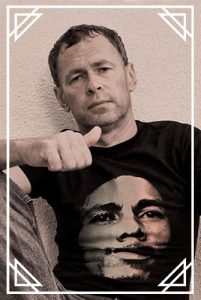 Indeed, at some point CHOM used video to capture the techniques he was working on but every time he shot a new material, he deleted the previous one as he only had a few tapes. However, today, when he recalls these stories, CHOM still believes it was the right thing to do. “I was an apprentice, not a photographer or a cameraman. It wouldn’t add to my skills if I took pictures with one master or another, and I didn’t need cheap memories either. And today I am valuable not because of whom I learned from and with whom I studied, but because of what I personally know and can do. In fact, I was the black worker of my own life for 12 years – the very thought of not being able to do something, not knowing something, or being worthless was so depressing that it made me burn through the darkness of energy and chased me around the world.”
Indeed, at some point CHOM used video to capture the techniques he was working on but every time he shot a new material, he deleted the previous one as he only had a few tapes. However, today, when he recalls these stories, CHOM still believes it was the right thing to do. “I was an apprentice, not a photographer or a cameraman. It wouldn’t add to my skills if I took pictures with one master or another, and I didn’t need cheap memories either. And today I am valuable not because of whom I learned from and with whom I studied, but because of what I personally know and can do. In fact, I was the black worker of my own life for 12 years – the very thought of not being able to do something, not knowing something, or being worthless was so depressing that it made me burn through the darkness of energy and chased me around the world.”
CHOM lived where he was – he was not attached to anything and had nothing. Not a single brick aggravated his situation (except the discomfort of all kinds of insects, bedbugs, cockroaches, or ants, that he slept on). But there were kind people who helped him – some with money, some with advice, and some with just a kind word. By the way, it was easier in the schools and monasteries than on the street. There was a place to sleep and wash.
“To be honest, the poor development in monasteries often depressed me. It turned out that they were only useful to me as shelters. In all my time, I have not met any real teachers in any monastery. They were just good people preaching natural symbols. For me, religion was not the point that could move me. In my opinion, all religious values should be just a normal attitude towards life. Knowledge should come through effort. And I believed and continue to believe only in my own efforts. And this requires freedom from any external attachments.”
So, one event and intention generated another. As the mystics say, it “led out” – new opportunities and teachers emerged. Oddly enough, the Asians did not help him as much as the Americans, of whom there were a lot in Asia. They helped with translation and led out to people.
This is how he got to the secret places of Mount Maoshan, Laoshan, Lau Fau Shan, Weibaoshan, Taishan, Hong Kong, Taiwan, Singapore. This is how he got to Indonesia, Burma, and other countries. However, here we recommend reading the book “The Hermit,” which describes in more detail the results of his travels.
No matter what CHOM did, no matter what schools he went to, one thing was important to him: to practice. With Santri Nusantara – breathing, with Arnis – working with short energy, with healers – penetrating parallel energies, with the Mao-Shan tradition – talismans and symbols. With the patriarchs of the Liang school – alignment of the axis, and with the followers of the great Chen Fake – the art of working with space.
CHOM often didn’t even care who was teaching him, as long as he saw that the knowledge was worth something. And since he had more than 10 years of practice under his belt, he was not an “enthusiast” or a fan of anything but was looking for real depth. In fact, all this lasted until the moment Master Wu and hermit Liu centered him.
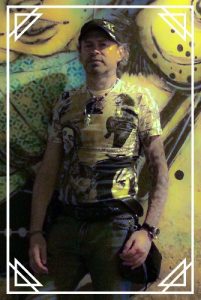 “Perhaps I created a mess with my actions”, CHOM remembers. “It’s not right to be so involved in everything. But decades later, I understand how right this was. I developed my body and my brain, for which they repaid me and helped me put everything in order. Not the teachers, but the body and the brain. Without belittling the merits of those I learned from, I would say that if I didn’t act, compare, and try, today I would simply remain on the sidelines of real knowledge and at best be a member of some family – Chen, Lian, Bei, etc.
“Perhaps I created a mess with my actions”, CHOM remembers. “It’s not right to be so involved in everything. But decades later, I understand how right this was. I developed my body and my brain, for which they repaid me and helped me put everything in order. Not the teachers, but the body and the brain. Without belittling the merits of those I learned from, I would say that if I didn’t act, compare, and try, today I would simply remain on the sidelines of real knowledge and at best be a member of some family – Chen, Lian, Bei, etc.
And I don’t want to say that this is the right way, but it gave me the opportunity to learn the methods of teaching and structuring knowledge, which I still had decades to work on. No master or teacher can be above knowledge. If there is no system above the teacher, then he plunges his students into limitations.
Many remained in my memory without a name or even a place, but I didn’t think I would ever return to the places I visited, so I didn’t need to create history. Today, when I use my social image, probably everything would come in handy. But I’m not burdened by it. If there is knowledge, it remains knowledge even without an image. An image is nothing more than information, which is always created for the sake of a personal story. For me, as someone who has been erasing it for 20 years and practicing it for almost 45 years, it’s hard to be attached to any events or names. At that time the situation was made much easier by the fact that after ten years of practice with the Master I had learned to understand the language of gesture and body, the importance of rhythm and discipline, and could distinguish the real from the unnecessary.
The ability to learn reduced time significantly – I didn’t have to mindlessly repeat exercises. If you do not understand why you need knowledge, you will never understand how to get it. The most precious art of all is the art of learning. Everything else is just a consequence.”
Hey, You!
CHOM’s quests as a Jie Kong would have ended if he hadn’t gone to Hong Kong. And although he had learned and seen a lot, everything that happened after Hong Kong is not comparable to the previous events.
By the time he arrived in Hong Kong, where the Maoshan monks had sent him, he was no longer living in sequential events but in parallel ones. Jie Kong had already decided for himself that Ihewas leaving, and all that was left was to figure out where to. He almost stayed on Maoshan, but the breakdown caused by the Chinese communists did not allow him to stay there longer, and he was sent to Hong Kong. In Tai Park, Jie Kong was supposed to meet Him – the person who determined his further wanderings.
The person Jie Kong met in Tai Park was Master Yu – a monk from the Celestial Masters school. Although he was tipped off to this meeting, he had no idea how he was going to find him. But everything turned out to be quite trivial. Upon arriving at the park, he immediately ran into the tuishou wrestlers (a kind of wrestling by listening with the use of gripping, twisting, throwing, and pushing). Well, he was immediately hooked. If there was a place to fight, it worked on him like a red rag to a bull – he was immediately drawn, and got entirely caught up in the process.
It must be said that things in Hong Kong are not so simple, as there are areas of influence. And if you get involved in something, you immediately become at least the object of someone’s attention. They’re going to talk about you and report you. Jie Kong ended up in Li Tailong’s area of responsibility, which means that the school he entered belonged to one of the Hong Kong Mafia clans. But Jie Kong realized this on the third day when they sent him a tough guy, with whom he had a real fight.
And there he was in Bruce Lee’s homeland, caught up in the dream of his adolescent fantasies. Jie Kong had clashes before in the Philippines, Indonesia, China, Taiwan, and the United States, but it was this fight that attracted the attention of half the park. And in that half was Yu Dongting. It was impossible not to notice him – he looked like a tree towering over a field.
At the end of the battle, which had no winner but made it clear he shouldn’t show up again, Jie Kong knew: he had to get out of there. He had already been invited to see Li Tailong, their leader. As he was stepping out of the crowd, his eyes got fixed on Him. Mechanically, he asked if he knew Master Yu. He invited him to Kunlun Park the next day. Jie Kong was exhausted, and without even asking for the exact time, he went back to his room which was not far from that park.
In fact, this story is described in the book. The point is that Jie Kong did meet the Master, who sent him to Mount Lau Fau Shan in Guangdong to perfect himself. Three years of communication with Master Yu helped him progress even further. He was the one who gave him the name Jie Kong (Disciplined and Mysterious).
A few years later, after traversing various mountains, Jie Kong met the person most important to him – the hermit Wu. Master Wu is a hermit who represents several Taoist schools at the same time. He and Master Yu welcomed Jie Kong into their family and imposed many taboos on him, some of which he cannot break even now (all of this is explained in the book). But to get an immortal master – that is “something” for any mind. True, CHOM had to travel quite a long way to get to Master Wu.
This encounter took place in the Golden Triangle, an avid drug-trafficking zone at the time. It is difficult to find out exactly where this place was since they took Jie Kong “there, I don’t know where”. However, the romance of the journey burdened his already half-normal mind.
Jie Kong was ready to stay and learn right away, and he didn’t need anything else. But that was not the case. He was confronted with complete control over him. He has never been so clearly and harshly controlled before. Master Wu immediately created a wall between Jie Kong and himself. He controlled his body, his consciousness, and, of course, his energy.
The first thing he cut off in him was desire. The second is that he clearly outlined the time of leaving society and the algorithm for interacting with it. Although here, Jie Kong’s desire to leave coincided with his indication of when he should leave. He was given ten years to prepare after living with him for almost three months.
The first thing Jie Kong wanted to do was to write about it all. But his attempt to talk about Master Wu was harshly interrupted and in a very strange way. Firstly, when Jie Kong tried to write it down, he found out he couldn’t do it. Secondly, all his thoughts and all his attempts to write and reconstruct anything related to knowledge led to nothing.
At his second meeting with hermit Wu, he explained it all. And this explanation was the hardest test. If the first time Jie Kong was half-worn out, just practicing, doing something, and sleeping in some shed, the second time he could talk to him clearly. Ample time is devoted to this in the book “The Hermit”. The name Jie Kong became CHOM’s most mysterious name in the perception of those around him. When real knowledge is at stake, you can’t speculate about such a topic.
Erasing Personal History, Or The Story Of Ben Chelero
Along with the existence of CHOM and later Jie Kong, Oleg Cherne developed an interest in Latin America. In fact, this interest was generated by three groups – the Jesuits, who were trying to impose their faith on the Native Americans and the Black people; Che Guevara as a symbol of freedom; and Castaneda, who helped him ask himself many questions.
But since CHOM was primarily a practitioner rather than a revolutionary, Shaman Che remained a just symbol for him. However, Che Guevara’s interest in the Native American drink Yerba Mate and the Incas lead him to the search for Native American knowledge. And, of course, Castaneda – the man who sent millions of people on a quest for inner freedom. His name began to mean more him me than Che’s. His interest in the Native American tradition began with him. And since at the time Oleg Cherne (CHOM) had no interest in using his own name, Victor Sanchez’s idea of erasing his own history appealed to him. This is how the nickname of Ben Chelero, associated with the 13th Mayan Solar Seal, began to take shape.
And although he received this name much later, after the Mayan ceremony of opening the solar seals, it was in the air from the very beginning. Holding on to Taoist knowledge with both hands, CHOM became an explorer of Native American traditions. Having made a couple of trips to Mexico, Peru, Ecuador, Bolivia, and Brazil he set a certain range of tasks for himself based on two matrix cultures – the Chavin in South America and the Olmecs in Mesoamerica.
Latin America sparked his interest in Africa, and specifically in the Yoruba culture. So, three lines were shaped: Mesoamerican, Andean, Afro-Brazilian, and later North American, when he immersed himself in the study of the Anasazi, Zuni, and Hopi tribes.
In Latin America, everything worked out much faster for him. He understood clearly where, why, and how to be. And for all the sacredness of these lines, it was his Taoist experience that allowed him to get into them quickly and clearly. All of this was accompanied by practical studies with Castaneda, Victor Sanchez, Ellis (who revealed very important aspects of the female Latin American cult for him), and various shamans whose names he doesn’t even remember now. Perhaps one shouldn’t talk about training with Castaneda or Sanchez, especially when it comes to the task of erasing personal history and fighting one’s own significance, but these connections gave Ben Chelero quite a lot, undeniably.
Of course, Native American audiences are complicated. Just imagine: some of them have no personal history, some of them are completely incomprehensible – they can’t say anything besides the words “synchronicity”, “dreaming” and the name of some narcotic drink, some of them are real and worn-out researchers, and the remaining 70% are either intellectually lost or just playing the role. So, CHOM had to work hard to get acquainted with various representatives of native cultures: Zapotecs, Aztecs, Mayans, those few and serious researchers who were the first to allow him to analyze indigenous knowledge.
To learn about Native American tradition, you either have to move to Latin America or seriously develop your brain, not erase it. Ben Chelero turned to the research of people who excel in the study of indigenous and tribal traditions. These were: Roger Walsh, Evon Vogt, Stephen Houston, Galina Yershova, Yuri Knorozov, Michael Coe, David Cayley, William Gates, Eduardo Montezuma, Miloslav Stingl, Lewis Spence. He was interested in their analysis and experience, and he was able to take a lot from their work.
Years of wandering through the vast expanses of the Americas and Mesoamerica, which immersed him into the traditions of the Hopi, Anasazi, Zuni, Zapotec, Toltec, Mapuche, Quechua, and Aymara allowed him to gain experience and knowledge which helped him acquire personal power and the art of living with intention.
This period of Ben Chelero is marked by his African studies, which led him to capoeira, that he later introduced to Russia. So, Ben Chelero is also associated with African culture, or more precisely with the Nkisi and Yoruba cultures.
Latin America gave him a very important understanding of time and space, which allowed him to divide all Native American cultures into two types of traditions: matrix and transitional. A matrix tradition preserves within itself the scheme of laws and knowledge. The transitional tradition either has not yet fully formed into a coherent system of knowledge, or it has the task to be a predecessor and a preparation for some other culture.
The notion of matrix cultures proved to be quite profound: it explains, for example, many historical mysteries concerning the fate of ancient civilizations. For example, the Mesoamerican Mixtec culture was transitional. The matrix Mesoamerican culture of the Olmecs showed knowledge of transformation, portals, and transition to other dimensions. The same was true for the Chavín in South America and the Anasazi in North America.
As such, the matrix culture cannot be destroyed from the outside. It is so deep in the knowledge that if someone “conquered” it, it means that by the time of conquering it just ceased to exist and has made an “exit”, a kind of self-destruction. The well-known Russian “unsteadiness” is caused exactly by the transitory nature of the culture: constantly moving from one quality and form to another, it cannot grasp the matrix knowledge. Matrix implies volume, a united development of physical, energetic, and spiritual principles.
Such generalizations have formed the basis of a universal doctrine of the unity and harmony of the natural, social, and human, which is achieved through personal development. The work can be greatly facilitated by a structure that contains knowledge of the system and patterns that create the “original conditions”. Otherwise, I had to be a pioneer, wasting extra energy on “learning the right teachings”. the Taoist tradition enabled Ben Chelero to become a good student rather than just pretend to be indigenous.
Ben Chelero believes that there is no unified teaching about the matrix essence of the world yet, but there are people working on it – Arguelles, author of “The Mayan Factor”, who considers the world order system as a whole pulsating macrocosmic zone, Sufi Idris Shah, Rudolf Steiner, Claude Lévi-Strauss, Joseph Campbell, and partly Castaneda. However, all of this is an ongoing search for the philosopher’s stone, which still hides the enticing code of special knowledge.
Some people helped Ben Chelero a lot in the systematic approach but could not give him more in terms of practice. Some examples are Gurdjieff, Ouspensky, and even Helena Blavatsky, although her representation of the knowledge system is purely feminine, and you have to dive into sensations rather than logic.
However, as strange as it is, it was the African and Native American researchers who made a great contribution for the formation of matrix knowledge. Here stands out Raul Canizares – America’s high priest in the field of Santeria, Carol Dow – a researcher of Afro-Brazilian cults, Núñez Luis Manuel – a researcher of Afro-Caribbean cults; Jacob Oluponа, Baba Ifa Кarade, and Awo Falokun Fatunmbi – researchers of Yoruba culture related to the Ifa tradition, and Julio Garcia Cortez – researcher of the Osha tradition (Yoruba-Lucumí-Santeria).
However, the researchers here seem to be divided into practitioners and analysts, which is not enough to comprehend rhythm and spirit. But since Ben Chelero needed to find an algorithm for constant development, without which sooner or later one reaches the limit, he devoted myself to practical analysis.
Тhe „concept of limits” formed the basis for the development of a peculiar worldview on the indigenous way, the Ben Chelero way. He created an experimental group represented by Eduardo, Tuku, and Toltek, which he decided to control through dreams and receive all the information from them. Just the way that Castaneda taught him.
This experience turned out to be the most effective in realizing all those practices that he has been learning for almost 15 years. Ben Chelero assigned himself the role of cognition of rhythm and thus he lives within the three limits of cognition of the indigenous tradition. As a practitioner, he studies the rhythm of the practices, as an observer – he follows those whom he has taught Native American practices in dreaming, and as an analyst – he studies researches of Native American traditions.
Rhythm
Rhythm is the art of being aware at any given moment. For example, if the mind is contracting, a recovery practice or other mind-altering practice is used to gather energy for the mind. A sign of proper rhythm can be the state of seeking, indicating that this person at least does not want to lose his quality.
Striving for self-development indicates that he wants to strengthen his quality. Then comes the gathering of strength and going to a higher level. This already requires special knowledge. A person who seeks and develops himself has a chance for the future. It is seen as rebirth, reincarnation, a kind of dotted immortality.
And the one who loses his quality dies – or to be more precise, is reborn without the quality of the spirit – “to be born a baobab”. The fact of reincarnation can easily be ascertained if the attainments of the spirit were high. A low level frequently results in a combined reincarnation – two or three similar spirits come together into one, and exactly who will win out in the new body is not easy to tell.
This precisely explains the theory of rhythm that the African continent knows most deeply. Here the Indigenous trait in me mixes with the African, and I discover for myself a new super-knowledge embedded in the capoeira. But here I also find myself in a situation of great protest. By studying and communicating with such great capoeira teachers as Brasilio, Suassuna, Acordeon, Noh, Cobra Mansa, Bahao, Bandeira, Rica Boca, and others, I am confronted with a very deep and contradictory world that on the one hand attracts me, and on the other, provokes a protest related to the emasculation of the indigenous knowledge of Angola and Yoruba.
So, I dedicate myself to cleansing capoeira of everything imported, sporty and empty. By continuously inviting various capoeira masters to Russia for over ten years now, I continue to cleanse the space of capoeira and become aware of this art of rhythm.
And here I see my main merit in the restoration, the arrangement. I simply clean the tradition as an archaeologist cleans an ancient statue – slowly and precisely. And I don’t want to claim the role of a great connoisseur of the universe at all. I find it interesting to evolve. That, in fact, is my main interest in life.
We obey the laws of Heaven and Earth, which were much better understood in antiquity, even if they were less well explained. Every knowledge has its own rhythm to which correspond its own laws. Only the approach, the requirements, the principles, and the means of learning – such as the Internet or the mobile phone – can be updated.
Patrono
Patrono is the image and archetype of Oleg Cherne. The name Patrono replaces to some extent the name CHOM. After 40 years of practicing, surviving, and overcoming, Oleg Cherne was initiated as Patrono – it is his name in the capoeira tradition, which he accepted with gratitude. This is how he acquired another name – Patrono.
“Even though the name appears as a result of a consistent history on the path, for me, says Oleg Cherne, it is like a fresh string, although I have already realized this image at different stages of my life. I associate this name with the perception of the archetype of the godfather, although it has its own special sound.”
Patrono is the godfather of many practitioners, as he has often had to purify and protect the path of development and cultivation. Today, having devoted himself fully to the service of the path, Patrono naturally sees the practice as a process of growth, and the attitude towards it as an attitude towards something native and close.
If you’re interested in more details, you can also read more about Jie Kong, Ben Chelero and, of course, CHOM.
Patrono doesn’t care about the past, and he’s relaxed about the future. He lives in the present because he values the process of creation, which may still be up to him. Or maybe it’s the other way around.
The Celtic Trace of Gleb Cherny (Gleb Du)
In my personal Celtic history under the name of Gleb Cherny (Gleb Du), I not only encountered the extraordinary world of Celtic knowledge, but also gained mystical experience through immersion in this knowledge. In the Celtic heritage, I encountered a clear and thorough structuring of the knowledge system in the laws of poetry, the geis prohibitions, connections and conjunctions, and I received valuable experience in the art of ecstaticism.
On the path of development, sooner or later I had to come to the systematization of knowledge, in order to understand the process of acquiring knowledge. This led me to the wellspring of systematic knowledge, connected precisely with Celtic culture. This is also the view of many researchers of Celtic culture. Among those who have contributed much to the study of the Celtic heritage and the understanding of the structure of the knowledge acquisition process, the following researchers stand out:
- Thomas Rolleston, who has made significant contributions to the study of Celtic mythology;
- Stuart Piggott, who has done serious work on the study of the Druids and the arts of the ancient Celts;
- David M. Wilson and John Arnott MacCulloch – scholars of Norman, Anglo-Saxon, and Celtic mythologies;
- Barry Cunliffe – author of papers on the migration of the Celts across Europe;
- Miranda Green, who studies the art, mythology and religion of the Celts.
The Celtic tradition was the third in my life, after the Taoist and Latin American traditions, through which I gained mystical or irrational experience. And this tradition further strengthened my focus on the nature of self-development, my attitude towards development, and my interest in attaining qualities based on principles and laws rather than dimensional reasoning. Exactly this defined the laws of continually experiencing the act of creation – of constantly nurturing the body, nourishing the brain and ecstatically experiencing the senses.
Today, one must master the method of conscious development and not be content with the unconscious use of the innate possibilities. And if consciousness is involved in the work (i.e. exists actively), it must also be explored.
The Celtic trace led me to a social adaptation where Gleb Cherne (Gleb Du) came into the picture, and in fact this is what helped me position myself as Oleg Cherne. Since I came to know the Celtic tradition, which I turned to more than 20 years ago, the daily analysis of events and contacts has become a way of life for me. The processing of knowledge, purposeful interaction, and identifying their “points of intersection” eventually led me to a complete dedication to the study of various world traditions.
And if there were a sufficient range of exercises for the body and the energy, obviously the mind was not sufficiently involved, and therefore not sufficiently nourished. It was the Celtic tradition that showed me the system for nourishing the brain, thereby fully revealing the theory of the five tastes known from the Taoist tradition.
The knowledge of fluids, of the nature of not only being and nurturing, but of living, became the foundation of my Celtic path. So what began with Ben Chelero’s story was reinforced – namely, that everything must be built either according to universal principle or in relation to the natural resource in which you live.
If the necessary conditions for universality are not present, then there is a preparatory or transitional model. It is the same with practices: it is most dangerous to get hooked and start working with transitional models, as this will involve you in a partial knowledge.
It is easy to see that the algorithm of infinite development means infinity of life, in one form or another – a normal religious constant, only in dynamics adequate to our century. By the way, here we must also introduce corrections in experience.
Immortality and Water
Immortality is an alchemical concept, not a religious one. There are religious definitions, however, which are simply filled with all sorts of meanings. Several serious cultures acknowledge the existence of immortality beyond any doubt: Latin American, Celtic, Indian, and Taoist.
The Celtic tradition has helped me understand the lives of the immortals, not as a form of knowledge or possibility, but as analysis. As a boundless revelation where my encounter with immortality was linked to an attempt to analyze the lives of the immortals, rather than ignorance. And without wishing to speculate, this personal experience of encounters with the immortals now has a 20-year history.
The analysis of the lives and behavior of immortals became very important to me, and this analysis emerged with the study of the Celtic tradition. Although I previously thought I could analyze and realize, I was actually very wrong. This ability requires one to first develop systematic thinking. Only systematic thinking can lead to analysis.
And so, systematic thinking led me to two seemingly incompatible interests: water and immortality, since the Celts already had their own concept of immortality, as did the Taoists, Olmecs, Egyptians, Incas, Yoruba, Thracians, and other cultures. What’s interesting is that with the Celts, the idea of immortality permeated their everyday life, and they conformed to it and lived it. This revelation, this discovery, helped me organize my long experience of studying the nature of knowledge and its principles, which I have tried to show in my book “The Wine Code”.
The Celts led me to study the properties of water and all beverages related to water, which revealed to me the knowledge of the world of whiskey, beer, cognac, wine, folk, and sour drinks. Precisely in that order. So, from a person who doesn’t drink any alcohol, I became an advocate of quality liquors. For me, structured liquid, no matter what it is, has a certain meaning and above all, it brings knowledge and leads to an analysis of the lives of the immortals, which is precisely related to the Celtic tradition.
I began to analyze the possibilities and especially the experiences of people who have achieved the state of immortality. It was a special experience to get to know the human spirit, of what makes you mortal. The biggest problem is that people are simply not ready to perceive the knowledge, they have already forgotten how. And the reluctance or rejection is simply a reaction resulting from the brain not being nourished.
The inability to nourish the brain has led to a simplistic existence of the mind, after which knowledge has been superseded by information and reaction. The main problem of modern people is not whether they agree with something or not, whether they believe in something or not, but not knowing how to feed their brains. Because that means they can’t open their minds to new ideas or use their minds for analysis. Thinking, analyzing, rationalizing, reasoning are empty concepts for modern people. And the first thing they must do is to find out which fluids can naturally help them to restore the physiology of the body and the nourishment of the brain.
It is the lack of understanding, even in people with developed minds, of the structure of the body and the properties of the brain, which needs to be nourished, that prevents me from interacting with the scientific community.
Achieving a specific state of the body and the brain can help not only in the discovery and exploration of the laws but also in their application. Laws and revelations should cultivate the person, not just be used as an additional resource. Science today reanimates the sick and supports the lazy but does not create the opportunity for the more prepared to move on. Scientists are mostly ignoramuses who throw all their energy into chasing results, losing themselves in the process. An example to the contrary? Leonardo da Vinci, Newton, Bacon.
Such is the life of people – they lose themselves because they have set their sights on results that are insignificant to their basic life. What is the main conclusion from the study of the lives of immortals? These are people who are constantly generating their own energy and improving the space around them. A person who does not generate energy, who does not know how to do so, is infected with laziness. This laziness becomes a breeding ground for viruses with which one begins to feed the surrounding space. Only he who works on himself has the right to err.
Today, after 40 years of teaching and giving lectures and seminars in 140 countries on all continents, I want to state with full responsibility that the problem of the modern world is the approach to education. No solutions or adequate actions can be found unless the disastrous development in school years is changed.
Today the school does not apply a systematic approach. Everything is stuffed and thrown without building interconnections. In school, children are stuffed with information that they cannot use consciously. Instead of learning how to learn, to develop concentration, to learn the physiological basis necessary for development, children are exploited. In most cases, the school becomes something like a psychiatric hospital ward.
When I meet with audiences around the world, I often encounter primitive forms of thinking, people reacting rather than thinking. Nowadays, a person cannot call himself a person if he is not a person of action. And if he has the necessary capabilities by nature, he must ask himself even more questions.
Shaaban
Shaaban (Oleg Cherne) is a Sufi name. It so happened that in his life Oleg Cherne met followers of Idries Shah, Rumi, and the Mystical School of Sufism in Indonesia. Shaban’s Sufi path was mainly linked to the Persian Naqshbandi tradition (نقشبندیه, the Arabic version is al-naqshbandiyya, النقشبندية), which, although requiring special initiation, was democratic enough to allow him to study the tradition without being tied to a particular order. This proved to be very important as it allowed him to gain experience in searching and especially in perceiving.
At the heart of this particular take on Sufism was the liberation from everything, even from Baraka. To one extent or another, this is what Pir Vilayat Inayat Khan, the son of the founder of United (Universal) Sufism (Sufi Order International), the famous Murshid Khizrayat, calls for in his proposal of an integral approach to Sufism. Here it is also interesting to highlight Baba Rexheb, a representative of the Bektashi Order in America, who offers an understanding of the Sufi path in a form that is understandable to the West.
Similar ideas were developed by Hazrat Azad Rasool, an Indian Sufi who united the teachings of several Sufi orders – Naqshbandi, Chishti, Qadiri, and Shadhili.
Shaaban adopted the way of the salika – to follow the path of knowledge without striving for rank – by becoming a wandering observer of all Sufi forms of learning. Thus, his Sufi lineage was built on the experience of interacting with various Sufis, on public encounters with various murshids, and on the teachings of Rumi “Mesnevi” and the works of Attar, Saadi, Rumi, and Nizami. It was the Sufi path that helped him identify his attitude towards the spiritual path.
“Spiritual development is a very speculative concept that guarantees the acquisition of quality if the person represents something in himself and is not just following someone or is initiated by someone somewhere. That is, it is something deeply personal. One who has not known inner peace and harmony cannot speak of spiritual development. He has to bring order in his body, in his head, and only then he should define himself. Yet this is a personal and intimate thing and no one has the right to force spiritual development on another person. This understanding actually stopped me from joining any of the orders, which seems paradoxical but in practice shows the greatness of the Sufi path.”
“The spiritual – this is content and in order to have a place where it can be stored, the form must first be built. And this is where variations appear. Otherwise, spirituality will become politics. A person is obliged to satisfy their need for limitlessness. But to begin with, this need has to be created,” Shaaban continues.
Sufism allows one to contemplate in atheistic terms, which enables it to form a doctrine of unconditional development where there are no external and internal contradictions. This is precisely what Oleg Cherne wants to show in the books “The Sufi Bag” and “The Cart of Magic”, where the obvious and even inevitable result is shown in the form of inner progress or, in the worst case, of an activist spiritual complex.
Undoubtedly, the main category and space of search, the main art of the Sufi (and therefore of Shaaban) is life: “The quality of life should be such that there are no crises and depressions, and the anticipation of the future should be extremely positive. This is not hedonism – but a love of life that places a demand on oneself much higher than the demand on anything or anyone else.”
A Little History of Oleg Cherne
In fact, that’s all that’s left of Oleg Cherne. Something like “from his personal life”. If Oleg Cherne had a personal life, it lasted until he was 25, when he decided he no longer had any friends or family. In other words, it was a life in which he actively participated with his passport details, and it started again after the age of 46, when he consciously returned to society.
The rest of the time, Oleg Cherne was only a conditionally social person and was in a constant readiness to leave society altogether. At the same time, his passport data probably constituted his personality until the age of 25, as it sort of linked him to the social institutions in which some personal life took place – in general, a social time-wasting program.
Therefore, it is probably too early to talk about Oleg Cherne’s life today, rather we can talk about his death or resurrection. However, the day we begin to understand ourselves – no matter what age we are – is indeed a great day. It is the day of our actual birth, not the physical one.
In fact, the time for Oleg Cherne came only after a long time of working on his sense of self-importance, after erasing personal history and identifying with the nature of the Tao, which has no name. Under these conditions it turned out to be quite easy to use any name, even more so the social name.
But no matter how he defines himself and his personal life today, it is subject to the process of constant development and improvement. Although this sounds regulated to many, for him it is quite natural and does not require additional effort to force himself to live in a qualitative perception of reality. In other words, today, Oleg Cherne’s life can have a specific meaning, and, therefore, Oleg Cherne can be Oleg Cherne.
By nature, each person has a certain meaning but if they don’t understand what it is, if they don’t express themselves at least professionally or even clan-wise, then what is the use of what they’re called?
The period of his life up to the age of 14 was generally a period of survival, both socially and physically. The number of illnesses that he managed to survive during this period did not anticipate anything good at all. And if it were not for the sport that he hates because of his weakness, he would not have developed will and discipline. But being forced to engage in sambo wrestling (after all, his father was the champion of Russia) and skiing, Oleg Cherne, at least, developed something resembeling willpower.
Why resembeling? Because what most people today understand by “will” is a utopia, because brute physical force kills its owner first and foremost. This was the only (though undoubtedly important) thing that formed in him around the age of 15. Then began the search, in which he got lost, probably until the age of 25.
Then it was time to say “stop”. In reality, though, the stop dragged on for five years from the moment he fell from the roof to the beginning of functioning, which happened to be at the age of 25. Realizing and knowing that he is nothing, Oleg Cherne plunged into wanderings and research.
The first impulse and push came when he was 21 years old, when he crashed, falling from the roof. Then, probably for the first time in his life, he asked himself, “Now what?” But here he was already shaping up as a CHOM rather than as Oleg Cherne. So the construction of CHOM is precisely related to the fall of Oleg Cherne.
And today, when it has become clear that knowledge must contain a clear sequence of development, both externally and internally, life has gained clarity, usefulness, and most importantly, taste. Oleg Cherne was born energetically and mentally, not just physically.
Today, as Oleg Cherne adheres to different cycles of development, breaking the connection with chaotic reality, he does not need to prove or explain anything. He can live and create to please himself and the space, without speculating on his importance and relying on informational support (however strange this may seem from the perspective of the fact that he represents himself in this informational way).
Since the world today is ruled mostly by people who do not really understand anything about themselves and at the same time have the power to tell you what to do and how to do it, he takes this as a given, as a certain energy, and the only thing to oppose it is to work on yourself. This is how we see the formation of Oleg Cherne, whether he is represented in one person, five, or with no name at all. And, perhaps, Oleg Cherne has a need to do something more, since he is positioning himself in a certain way.
Today, Oleg Cherne is a system. He constantly emphasises the importance of the system, because only through it can a person develop. A person who is in a system of development sooner or later “breaks through”. For him, the type of society as a whole is not so important, what matters most is the structure of development. It is the same constancy, discipline, rhythm, that leads to responsibility and, ultimately, to analysis. This can only be the Master who has achieved the architecture of knowledge.
Chola
I just don’t want to live somewhere,
where I don’t actually exist…
Sri Chola
Chola (Oleg Cherne) is a name that came about thanks to a yogi named Srila Vamsidas Babaji Maharaj (or Vamsidas Babaji in short). In its full version, the name sounds like Sri Chola. Actually, initially, Vamsidas Babaji called me simply Sri, and after a few days, he started addressing me as Sri Chola, and finally just Chola.
Biography is an amazing thing, it takes skill to meet it! This is what has driven me to search for my identity in macrocosmic space throughout my conscious life. Life is so unpredictable and mysterious that if you view it from the perspective of integral fields (i.e., different tonal levels of being), you will become immersed in the routine of temporal physics and living according to the birth-death formula. The nature of our reality determines our consciousness, or more accurately, what it can focus on and immerse itself in, that is life. Otherwise, we will live our lives in parallel not only in different integral fields but also in the field of our reality.
It is important to focus on the higher, to take our spirit as a foundation and transform it from unmanifested to manifested. To reach the necessary penetration into the nature of our mind, which means to open the path from the parallel to the consequent.
As if I had understood my own biography long ago, or at least its main significant points, when the universe revealed to me yet another, new initiation related to the consistent penetration into the nature of the perfect, to the transmission of knowledge, with The Perfect One.
After a nine-month retreat, I met the great immortal hermit Srila Vamsidasa Babaji, and he revealed aspects to me that were supposed to convince me that I was him or a part of him. In any case, his appearing, after I had devoted many years to the concentrated acquisition of knowledge, was for me part of my training as our minds merged in the search for the light. We immersed ourselves in the space of the eleventh integral field, the field where the light actually resides.
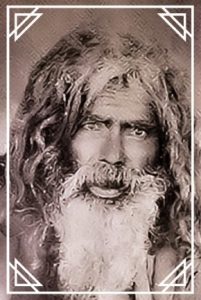
Srila Vamsidasa Babaji
This space, this sphere, which is the basis of the system of practical Khmer knowledge, had brought together all the Asian traditions. This space that I had made my way to for a long time in detours, in search of knowledge about the nature of light, a knowledge that I had gathered alongside my alchemical explorations.
This space, to which had led me my practical life and the many meetings with masters, among whom there were also women practitioners, bearers of light and harmony, without whom there really is no practice.
I clearly remember my first interaction with the world of women practitioners in the face of a Sannyasini whom I went to out of curiosity. She felt my light and nature in a very interesting way – by running her fingers along certain lines on my body. It was an encounter with something completely incomprehensible, but an encounter I remembered for a lifetime. It happened 40 years ago.
In time, I had the opportunity to dive deeper into the topic of female development. The reason for this was my constant searches related to alchemy and tantra, which carried the matrix of that gathering, accumulation, and absorption that is actually inherent in the feminine nature. And while alchemy led me to the Taoist tradition, tantra, amazing as it sounds, led me to African, Polynesian cultures, and then I turned to Tibetan, Hindu, and finally the Khmer tradition.
In any case, the interaction with the practical training of women is an interaction with tantra. Every woman is a tantra. So, gaining practical experience in interacting with women, I began to see this as a constant attunement to harmony, to the original source of light. So I immersed myself into the sea of tantra.
It so happened that during my journey for a very long time I was surrounded by extraordinary women: sorcerers, witches, hermits, oracles, disciples. All of them were connected to my parallel vectorial path related to women, and thus imperceptibly and obviously shaped my biography, which accumulated different details or rather colors along the way.
The timing of this meeting with Vamsidas Babaji hides one important detail and that is that I met him 30 years ago. Back then my idea of him was quite resistant, either I was not able to interact with him or the other knowledge I was committed to did not allow me to see the whole.
My interest in the study of dance (or rather the principle of experience related to nurturing through action) connected us very strongly, as for me dance is a tool for embracing space. This is despite the fact that for a long time dance was a physical thing for me, as I saw it as a training of the body for martial arts. Over time, however, dance has become something much more meaningful to me – an act of chanting, of aspiring to something higher (kirtan) and attuning to the metaphysics of development, which primarily involves the ideas behind the breaking of the Ocean of Milk, which in turn led me to the topic of the Apsaras and their celestial dance.
It is also a fact that, apart from women, only the man who has attained an understanding of the nature of the spirit can master the perfect dance. The perfect dance is that in which the movements repeat the constant effort. It is a kirtan, something that reveals the light through special body position, movement and concentration.
All in all, willy-nilly, getting to know the feminine nature became for me the basis for the creation of the True Body – the Tantric Body. It was this that led me in time to the Khmer tradition and the Apsaras. It was the dance practices, which I initially only performed and then began to study within different traditions, that came together in a unified effort to transcend the physical, and so dance became the art of transcending the material world.
Gradually, the need for the dance grew into a whole system of understanding the nature of light, which I was urged towards by women and, as I see it now, by Srila Vamsidas Babaji. I saw that dance was the perfect vehicle for perceiving, for reading, and interacting with space. It is a ritual, a rhythm, music, a scheme. And most importantly, it is based on harmony.
Vamsidas Babaji, with his special consciousness inhabiting the ninth integral field, is immortal, and on one hand, I understand the connection with him, as I have been studying the nature of immortality for over 40 years, on the other, my understanding is transcendentally quite limited. But in terms of being filled with Prema (the source of light), the connection with Vamsidas Babaji is very important to me.
He so clearly and obviously pointed out certain stages in my life that it led me to write this biography specifically from the perspective of knowing The Perfect One. Particularly striking to me is his explanation of the eternal state of being in love, associated in his case with Radha, and for me, perhaps, associated with treating a woman as a source of light.
My desire to teach women and learn from them began long ago and is undeniable. I have long spoken of the woman as a symbol of harmony, not as any particular woman. It turns out that I experience something akin to an eternal infatuation with Lakshmi as the supreme representative of female harmony. It is for me an inner passion – a mystery that you have to yearn for many years to be able to know.
Gradually, as I sought mental adequacy in the process of exploring the inner spiritual teachings, I realized that in order to achieve materialized interaction with the fields or frequencies, I had to learn to deal with the irrational, which is where the path of development in The Perfect One Project, or the path of light, is directed. This actually brings me very close to Vamsidas Babaji.
A person carries multiple parallel connections, and the construction happens sequentially. Unless we understand the integrality of worlds, we cannot answer the question: in which world do we live? This means that it may be useless to us, like our lower consciousness, which makes us dependent on temporal categories.
The important question for us is: With whom or what is our consciousness connected – with the light or with the darkness? If it is connected with the light, do we have enough expertise in the experience of being filled with light, and are we ready for this attunement?
As they say, if the gods want to eat, let them cook for themselves! The practice serves love and what we offer to love is light. Our spirit, by the way, is also light, in fact, an oracle of light. And before we turn to the spirit, we must first turn to ourselves. But if we do not know how to address the space, we cannot find the right door, nor open it.
As a matter of fact, in the description of Vimsidas Babaji’s life, the motif of theft is very interesting, which is also present in the story of one of the perfecters, Tera (her name was changed), who is described in the book “The Perfect One”.
Where does theft come from? Is something lacking? Or maybe you like it? Or is it playing with time? To steal something from time… As much as we stole from time, we gained! And that determined everything definitively. We’ve been taught to take, but we don’t know how to use it. And it weighs us down, and all we have to do is adjust. Whoever taught us to steal should teach us how to use it too! To define the problem is to adapt again. And what is the problem? The problem is that time never stops!
Whatever we take from time ceases to exist. The question comes down to fixation on memory or the existence of something from the past. They didn’t steal my childhood, they stole the light. Childhood has become a sign of something that no longer exists. The water is poured on my face, and there are traces of blood in it, and they are not from childhood, but no one bears the answer to that.
First, we lose time, and then the space in which the light lives!
Memories from my fall from the roof flood in… However, I am not only alive but happy in my exile from this temporal space. Only consciousness belongs to us, it is our true bhava.
Video
Master Jie Kong. Daoist Academy
Jie Kong. Taiji Quan
